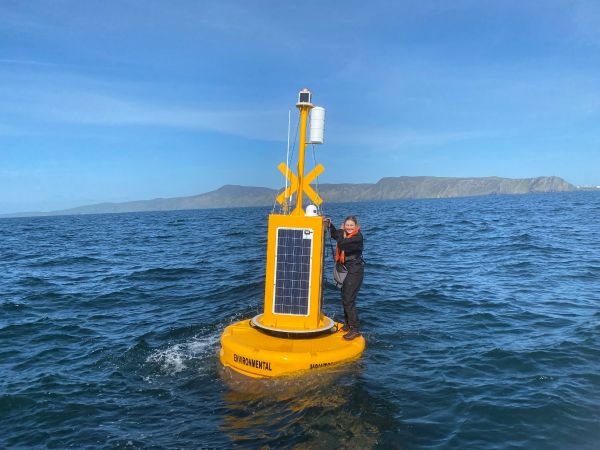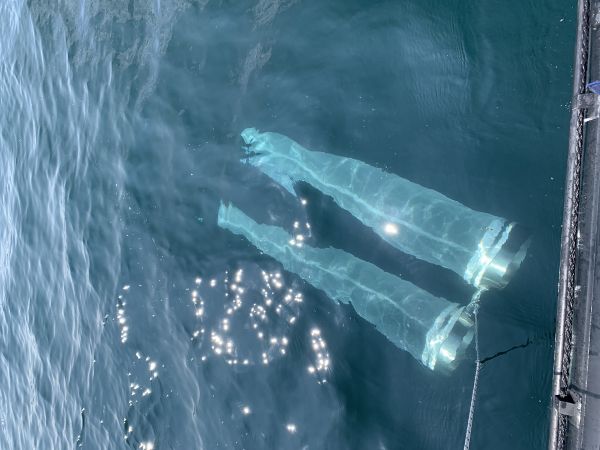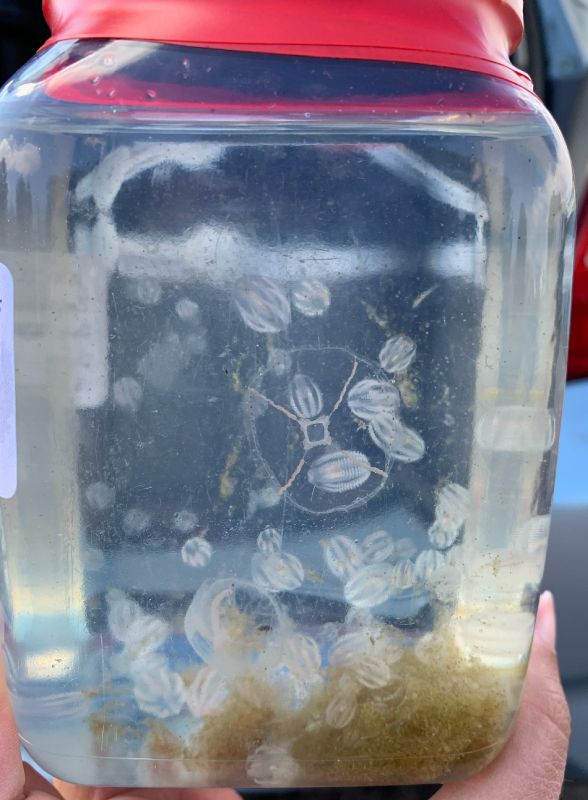The Isle of Man has a proud record of marine monitoring, assisted now by modern technology. Scientist Taylor Bridgens, Marine Monitoring Officer with the Isle of Man Government, explains what work is carried out and why it matters:
Marine monitoring on the Isle of Man dates back to 1904 and is one of the longest and most respected time-series in Europe.
Having a dataset that is over a hundred years old and as detailed as ours is rare and extremely valuable. Long-term datasets like ours have the ability to provide global insights on the impacts of climate change, in addition to providing crucial information on the status of Manx waters within the wider Irish Sea.
In May of this year, the Environmental Protection Unit (EPU) of the Department of Environment, Food and Agriculture, deployed a marine monitoring buoy roughly two nautical miles off the coast of Port Erin at the Cypris marine monitoring station.

Scientist Taylor Bridgens carrying out checks on the buoy
The Cypris buoy monitors for temperature, salinity, conductivity, pH, turbidity, dissolved oxygen, chlorophyll, the partial pressure of carbon dioxide, and wave height/direction.
Data is continuously collected and available in near real time on our marine monitoring web pages.
Additionally, we visit the Cypris monitoring station every two weeks (weather dependent) to conduct physical monitoring, buoy maintenance, and to ensure the buoy is in calibration. Water samples are collected using various techniques for the analysis of nutrients, phytoplankton and zooplankton.
Plankton within the marine water column (pelagic habitat) are the fundamental building block on which all life in our seas and oceans depend. Phytoplankton comprise the basis of the marine food web and produce approximately 50% of the world’s oxygen. These microbes are key drivers of marine carbon and nutrient cycles and represent an important carbon sink.
Phytoplankton samples are collected from various depths in the water column and a full community analysis is conducted to identify all species and their abundances within Manx waters. The Isle of Man has been monitoring phytoplankton species since 1995 and a masters student from the University of Plymouth is currently completing her dissertation on the analysis of our historic time series.
In addition, the EPU have begun monitoring for zooplankton, by collecting samples using a 200 micron mesh bongo net. The zooplankton data collected this year will be analysed for interannual changes and compared to data in the UK, which will add value to our young dataset.

Bongo nets used for zooplankton sampling
Monitoring nutrients, phytoplankton, and zooplankton trends are extremely important to assess the cascading impacts that changes in pelagic habitats can have on the marine food web and to assess wide scale changes in biodiversity.
Analysing nutrient phytoplankton dynamics and changes in plankton community structure can act as an early warning mechanism for larger scale changes in the marine ecosystem.
The monitoring that EPU is undertaking in Manx waters provides crucial data to support the protection, productivity, and resilience of the Isle of Man’s territorial sea.

A zooplankton sample


